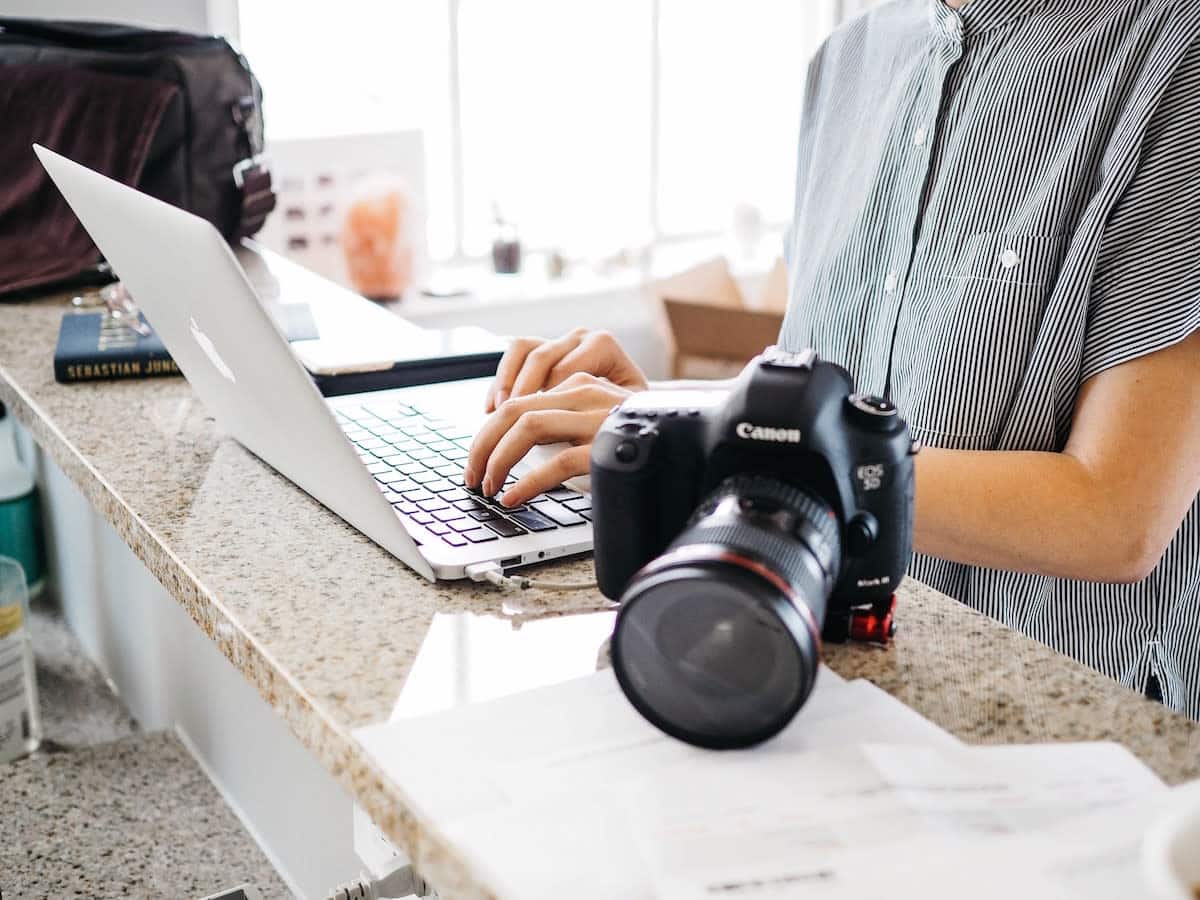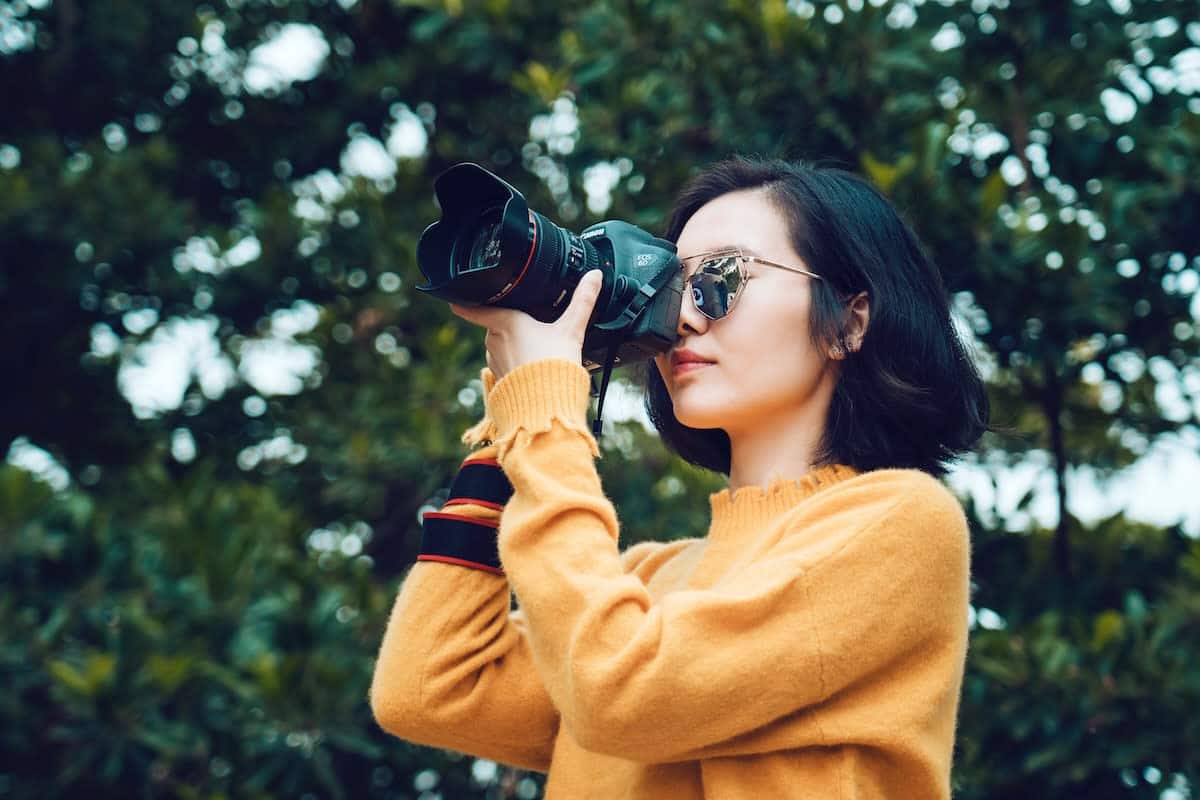TFP shoots are an amazing way to try out new photography techniques or stage a cool fashion shoot you’ve been dying to do—or just bulk up your online photography portfolio! We’ll walk you through what TFP photography is, why TFP photography can be great for your career, how to set up a TFP shoot, how to find TFP models and work with them, and how to create TFP agreements. Let’s get started!
What is TFP Photography?
TFP usually stands for Trade For Print. A team—generally a photographer and a model (or models)—collaborates on a photography project. Everyone works for free, but they all receive the TFP shots to use in their portfolios. Hair stylists, makeup artists, and photography assistants can also take part in TFP photoshoots as well. The term Time For Print is also occasionally used.
(TFP can also mean Test For Print, but this means something different. This is when modeling agencies send new models to a photographer to take some modeling portfolio shots.)
Why are TFP Shoots Great For Your Portfolio?
Whether it’s trying out new techniques or learning how to work with models, there’s tons of reasons why doing a TFP photoshoot can be wonderful for your photography career.
- Organizing a TFP shoot is a great way to keep your creative juices flowing and to break up creative blocks. TFP work allows you to step away from your usual paid gigs and really create something new.
- When was the last time you culled your portfolio? 63% of clients will judge you on your portfolio before anything else. If you’ve got some outdated work in there, it’s time for some spring cleaning. Once you’ve cleaned house, fill it back up with fresh photographs from recent TFP work.
- Want to try a new photography technique? When the creative fever hits, you want to bring your project to life—so grab the reins and make it happen! There’s nothing like a passion project to bring you joy and satisfaction. With TFP photoshoots, you can try out your different ideas in a low-pressure environment without a paying client looming over you.
How Do I Put Together a TFP Shoot?
As the photographer in the mix, you really have the most control over a TFP shoot. If the shoot is your brainchild, it’s time to assemble your dream team. You’ll want to find creatives that can help you achieve the best possible product. Your list of recruits may include:
Hair and Makeup Professionals
Nothing ruins a great session like a wonky eyelash or deflated hair.
Stylist
Wardrobe can play a major role in creating the mood of your shoot.
Model
Depending on the type of TFP shoot you’re building can determine what kind of model you’re looking for.
Don’t have a concept in mind but would love to get some TFP work? Network with the hair folks, makeup artists, and stylists in your community and see if any of them have a TFP shoot planned and need someone to shoot it.
Next up: the logistics!
First, you need to figure out what costs are involved in this TFP photoshoot. Equipment? Studio? Who pays what? Will you shoulder the costs yourself, or split it between the creative team?
Once you’ve got your TFP shoot team in place, share your inspirations for the shoot with them. Mood boards are helpful, as well as style sheets. It brings the team together and allows them to see what’s in your head. Cover everything from lighting and hairstyles to location and wardrobe inspiration. Pose suggestions or inspiration pictures can give your model time to practice and prepare.
Deciding on what a fair number of digital files and/or prints everyone gets and how the images will be chosen should always be done beforehand. Be open to your TFP team wanting to purchase extra images, but figure out the rates and stipulations ahead of time.

How Do I Find a TFP Model?
The easiest way to find a model is via social media. Models use social media to promote themselves and are in constant need of fresh content as trends fluctuate so rapidly. Many cities have dedicated Facebook networking pages. You can also try searching hashtags on Instagram. Models will often use their city + model as a hashtag. Post a casting call and ask for portfolio links, and offer your own. A model’s time and expertise is just as valuable as yours and they should be treated that way. TFP is a collaboration, not free labor.
Another great option is—wait for it—a modeling agency. You can contact an agency and see if they have any new faces who are looking for a TFP shoot. Models who have just been signed tend to need a lot of portfolio padding.
When it comes to TFP, models often have limits with what kind of work they’ll do. Don’t be offended if you are having a hard time finding models who will do TFP for nudes or who will travel for a TFP shoot. Respect their boundaries and move on to the next model.
Any Tips for How to Work With TFP Models?
Working with TFP models—or any models, really!—comes with guidelines. Here are some tips on how to ensure your TFP photoshoot with a TFP model goes as smoothly as possible:
- Set clear expectations. Who’s responsible for hair, makeup, and wardrobe? What are the requirements? How long will the shoot last? What if it rains? (Be sure you have a contingency plan. Nothing ruins a lovely TFP shoot in a park like rain! Either have an alternate date or location—or both—as a back-up. This ensures that your shoot will happen—and you can retain your TFP model’s commitment to the TFP shoot, even if the weather didn’t cooperate this time around.)
- If it’s a closed set or you’re shooting alone, allow the model to bring a friend to the set. Play some music and keep bottled water on hand. If a model is uncomfortable, it will show in every image.
- Check in regularly on how the model is feeling. Holding challenging poses or facial expressions can start to get painful. Offering them five minutes to sit or stretch can make all the difference.
- Consent is key! If you’d like to adjust a model or their garment, ask before you touch. What might be a simple trouser adjustment to you might make someone else deeply uncomfortable.
- Don’t be a creep. This means zero inappropropriate comments about their appearance or body; asking them personal questions about their relationship status; or asking them out. This is not only ethically wrong—it’s a professional relationship—but will (rightfully) garner you a bad reputation in the industry.
What Goes Into a TPF Agreement?
Even though no money is exchanged during a TFP shoot and TFP photography is intended to be used for portfolios only, it’s still a good idea to put together a TFP agreement.
Contracts and model releases exist for a reason. It’s an easy way to make sure that everyone is on the same page as how they can use their images. Some points to consider:
- Each TFP agreement should reflect the project at hand. Boilerplate contracts are a great place to start but add in the details that are important (like the equipment or rental cost split, for instance).
- Specify the usage parameters. How can the model use the images? Consider social media usage. Consider a no-filter clause. How are you going to use the images? If there is a offer to use the images for a commercial project, how does this translate financially for the model? Is it a one-time buy-out, or will it be on a commission basis?
- When drafting a contract, it is always a good idea to have a lawyer check it over. Better safe than sorry!

When Do People Expect the TFP Photos By?
When the TFP shoot is complete, do a basic edit on the images and add a giant watermark just to protect your own best interests. Invite your team to view the images and choose their favorites. Edit their choices and have them back to your team in a timely manner. The general TFP rule is a one-week turnaround. Discuss expectations with your team and deliver within the decided-upon timeframe.
Time to Add Your TFP Photography to Your Portfolio!
If you have used this TFP opportunity to branch out of your usual photography style, you may need to do a little reworking of your portfolio. When picking images for your portfolio,you’ll want to make sure that your new work has its own section, so as not confuse potential clients. Consider starting a second portfolio if this new work is much different from your professional work. Wedding clients probably aren’t interested in street fashion photographs, for example (but they just might be interested in maternity and family portraits).
If you’re using this TFP opportunity to start your portfolio, congratulations! You’re on your way to living your photographer dreams. Finding a great place to host your online portfolio website is important. Pick a website builder that offers dynamic templates that fit your brand and will showcase your TFP work beautifully. A free trial is always nice, too, so you can make sure the site fits your needs.
Soon, your online portfolio will be full of amazing TFP work—and we can’t wait to see it!
Want more photoshoot ideas?
How to Create Stock Photography That Sells
Expert Tips For More Powerful Action Photography
5 Tips For Good Night Photography












